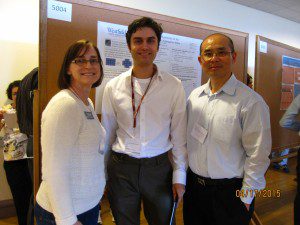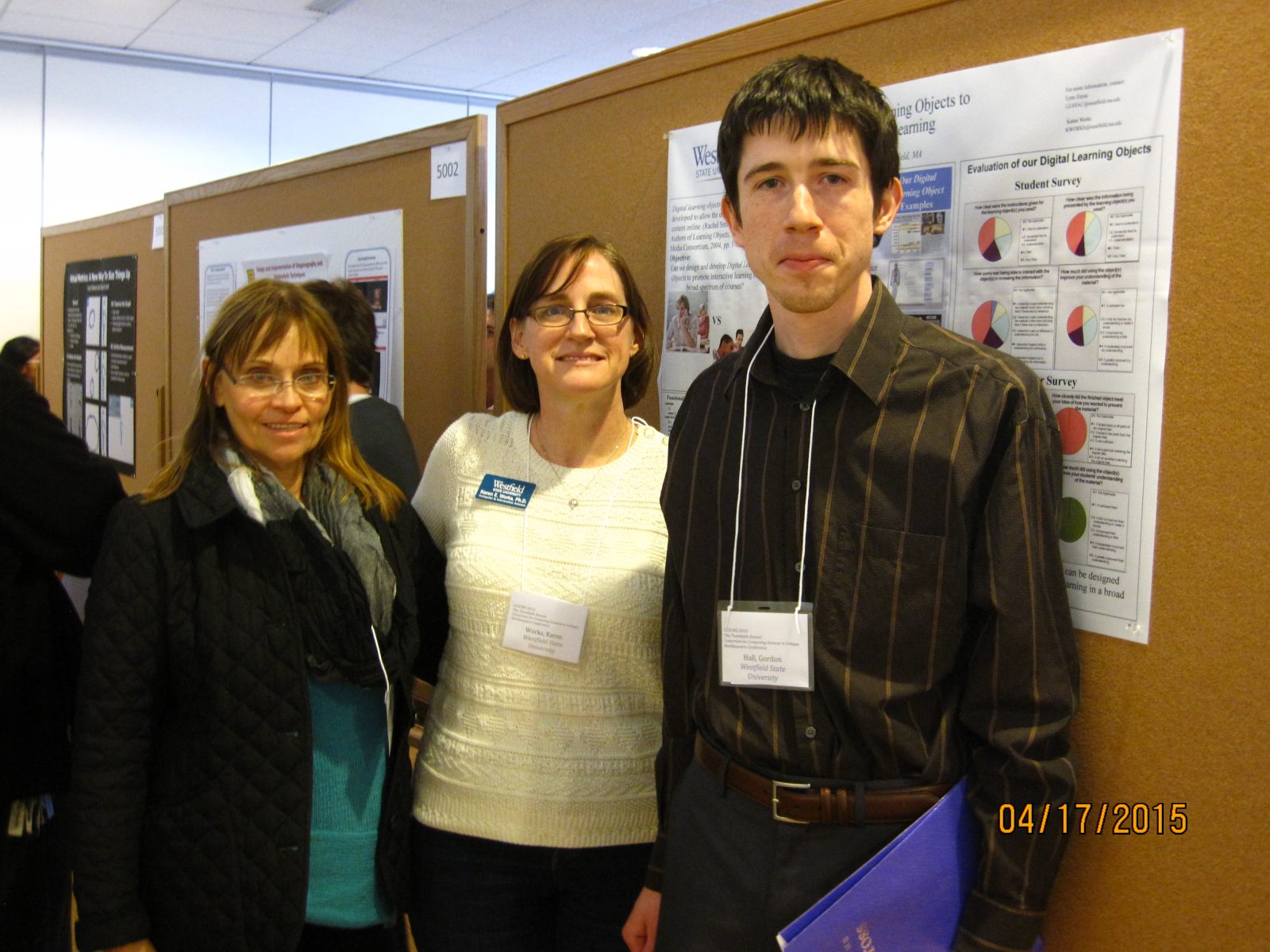
; (second) Karen Works, Tibor Mirkovic, and Computer and Information Science Department Chair Goopeel Chung
WESTFIELD – Imagine a map on your computer screen with the 13 colonies, preloaded with facts relating to each colony that can easily be expanded by teachers and students. Or imagine you can sit at your computer in Massachusetts and measure coastal erosion in California. These are just two of the topics Westfield State University department of computer and information science (DCIS) students Gordon Hall ’15 and Tibor Mirkovic ’15 explored for their undergraduate research projects. Both projects were accepted into this year’s Consortium for Computing Sciences in Colleges Northeastern Region (CCSCNE) conference, held from April 17-18 at College of the Holy Cross in Worcester, Mass.
CCSCNE, formed in 1996, is the northeastern region of the national Consortium for Computing Sciences in Colleges (CCSC), and serves one of the largest regions of CCSC. The annual conference is held to bring together faculty, staff, and students to exchange ideas and information regarding undergraduate computing curriculum in a small academic environment.
This was the first year Westfield State students have presented at the consortium, which reflects highly on the quality of the university’s DCIS program and its students.
Computer and Information Science Assistant Professor Karen Works finds the two students to be “exceptional.”
“They are both outstanding candidates for graduate school. They both are hardworking, highly intelligent gentlemen who work well with others,” said Works. “I know that I will be reading about their research in the near future.”
Hall, from Florence, Mass., conducted his research on the interactive learning objects that he has been developing at the CIT for use in faculty courses on Blackboard, an online learning software platform for students and professors to use for online courses.
Hall’s submitted poster portrayed screen captures of the learning objects, such as presentation, practice, simulation, concept models, information, and contextual models. He developed his digital learning objects using HTML and JavaScript, which covered courses ranging from psychology, sociology, and biology to math and computer science.
His research included asking students what they liked or disliked about Blackboard and what helped them learn. He then measured outcomes via student and professor surveys and presented graphs of the data he collected. His learning object models are currently being used at Westfield State.
“The opportunity to present my work in a symposium setting as I would to peers and professors in the real world was an invaluable experience. Additionally, the chance to learn about a broad range of subjects being researched by other students and see how we compared was important to our future work,” Hall said.
Mirkovic, from Springfield, Mass., conducted his research on the use of digital images to help measure the amount of erosion in coastal areas. His submitted poster was selected for inclusion in the Undergraduate Research Competition.
When measuring soil erosion, scientists use digital images to measure horizontal and vertical pixels. Current research shows that scientists should start measuring diagonal pixels as well. This process can take a long period of time, which led Mirkovic to develop the Diamond Builder algorithm that can help locate the optimal measurement and pixel configurations and help speed the process along.
“This type of research allows students to work with real world problems and refines communication skills that are critical for computer scientists,” said Works.


